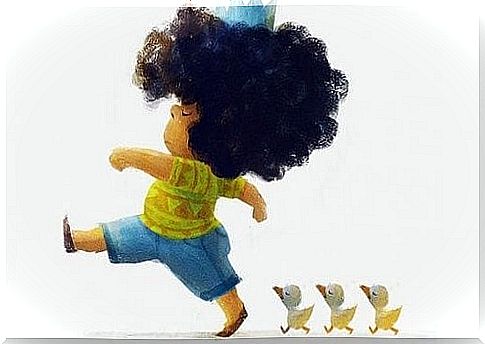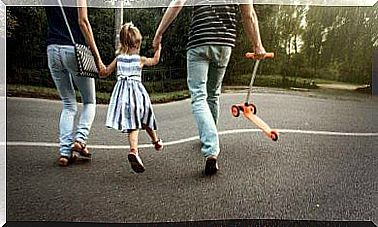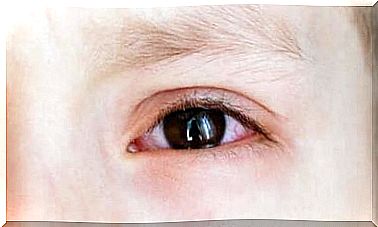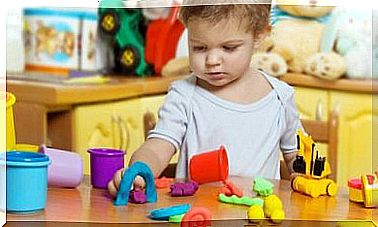What Is A Child’s Ingenuity?

Ingenuity and intuition are the main characteristics of our youngest. Ingenuity is part of a child’s daily activities.
Ingenuity is the most common quality found in children – it is their way of communicating with the world that surrounds them.
No matter what reality the child may have, they will always have their own perception. A place where their ingenuity brings them to guide them through a myriad of experiences.
Here we will examine all the things that sum up the amazing universe of a child’s ingenuity.
What is a child’s ingenuity?
The strange and abstract is what covers the definition of this word. Why? Because ingenuity is a concept where limitations and logic are non-existent.
It flows from children’s impulses and constant need to expand their cosmos .. go beyond the known and what has been seen and experienced.
A child’s ingenuity reaches its highest point when it creates original and witty ideas, also known as “thinking beyond”.

The main characteristics of a child’s ingenuity
Ingenuity consists of two factors. One is external (a child’s environment) and the other is internal (their perception of the world).
These two factors develop when a child acquires knowledge. They also help children learn and establish relationships.
Therefore, we can see their ingenuity work when they play, tell stories, eat or dress. Their perception and subjectivity are some of the most notable characteristics of their imagination.
Imagination and ingenuity
There is a difference between these two. As we have previously explained, ingenuity arises from one’s perception and reinvention of realities. Imagination, on the other hand, arises from the imaginary function of thoughts.
Therefore, it is not interconnected with their surroundings. Although both imagination and ingenuity are related to each other, it is important for us to differentiate them as they develop through different stages of childhood.
Ingenuity is still present (though not so obvious) in a teenager, whereas imagination disappears a bit earlier in childhood. That is why it is so important for children to enjoy their early years.
The development of a child’s ingenuity
A baby’s brain is very complex as all of its connections that will guide them through the rest of their lives are in formation. The compounds used frequently will remain, while others will slowly disappear.
This is why many studies indicate the importance of the first three years of a baby’s life. It is the perfect time to “treat” many different experiences throughout their childhood.
Experiences such as listening to music in different languages, reading, playing, walking or any other activity that will promote the development of their brain activity are recommended. This stimulation will thereby help to develop their ingenuity.
The way in which ingenuity develops in babies is quite difficult to define. Ingenuity starts to develop when we expose them to scenarios where they can recognize themselves as the protagonist.
For example, it could be when a parent or teacher uses imagination to tell stories. It will help strengthen their brain to create “inventive connections”.
Ingenuity in children aged 1 to 3
Ingenuity in children at this age is largely based on imitation. Therefore, their first experiences with ingenuity are imitations of what is happening around them.
When your dog does, they also want to bark. This kind of imitation helps them develop their ingenuity.
Ingenuity in children just before school age
Through this stage, archetypal patterns begin to emerge in their games. For example, some children will play house, food, bath and take care of their dolls as if they were babies.
Ingenuity in children in primary school
Through this stage, their instinct to socialize will open the doors up for play in groups. In this way, children can invent together. Curiosity about new experiences is their main driving force.
Ingenuity in school children is not centered around imitation, as they can now invent with more daring. Their ingenuity through this stage will become more abstract.

Ingenuity in autistic children
One of the main features of autism is a resistance to learning. As a result, autistic children will avoid realities by living in a fantasy world on a daily basis.
The way autistic children invent is much more complex. It is also less obvious as they lack language and motor skills, in some cases.
Their ingenuity can be quite different as it stems from logic and reason. The way they invent is still a topic that is being researched by neuroscientists.
How to increase a child’s ingenuity?
- Teach your child to be himself.
- Allow them to examine their skills.
- Teach them to explore new things.
- Use games to stimulate their ingenuity.
Lack of ingenuity
Lack of self-confidence, lack of encouragement, and harsh patterns at home or at school can lead to the fatal loss of a child’s ingenuity.
A parent can also reduce a child’s ingenuity if they constantly judge their creations, or if they do not allow them the freedom to create without logic.
To avoid this, it is important to have children examined. Allow them the freedom to choose what they like and what they feel comfortable with.
It will help them boost their confidence and ultimately it will help their ingenuity.








